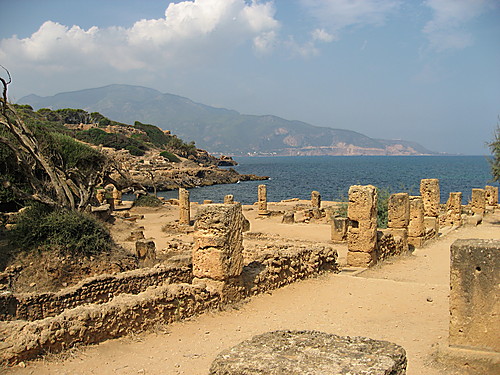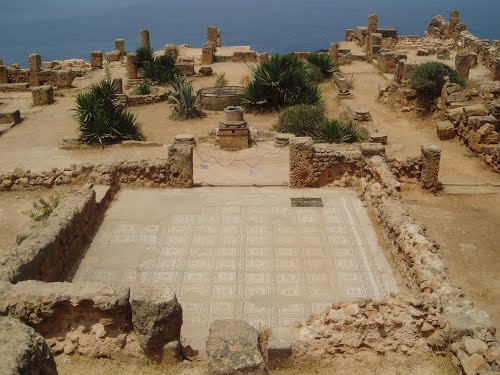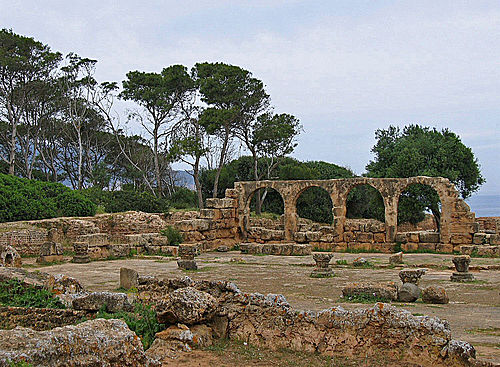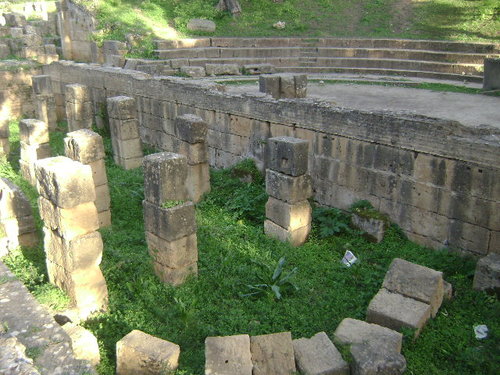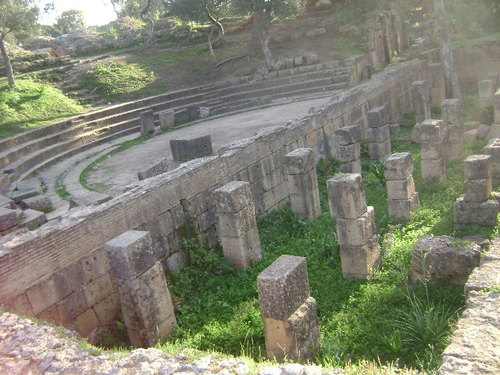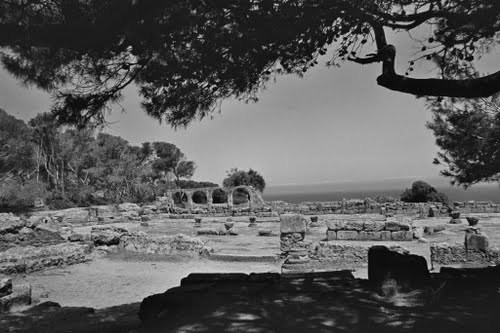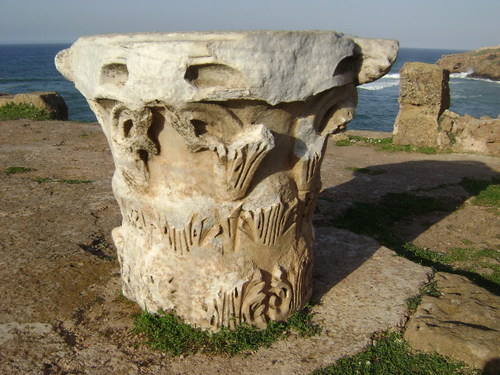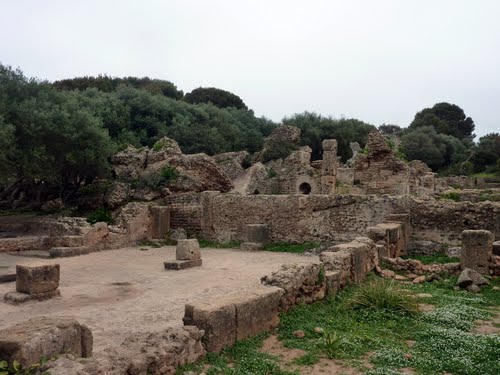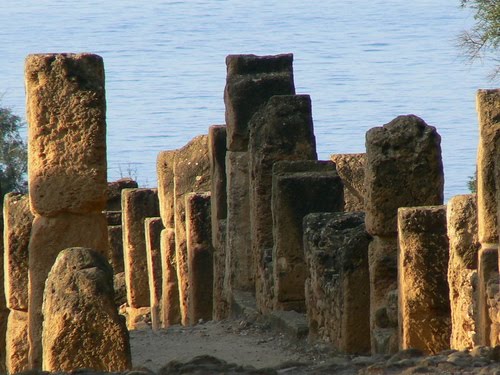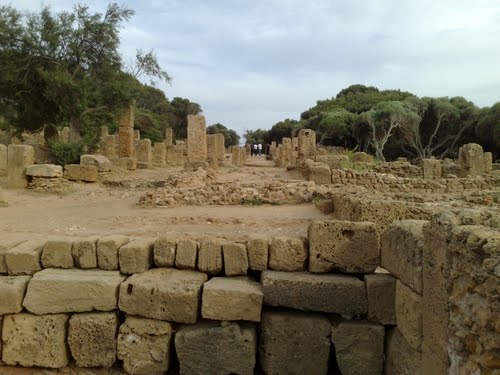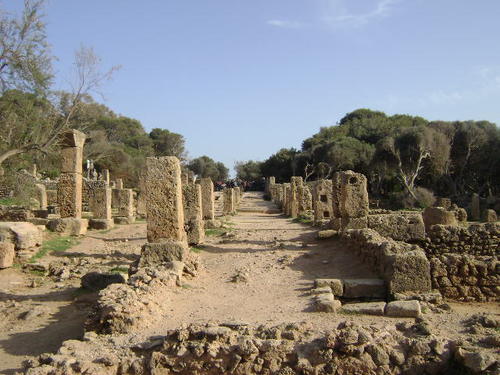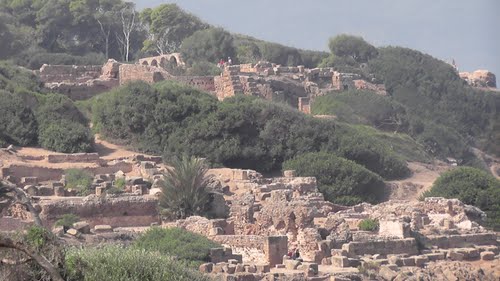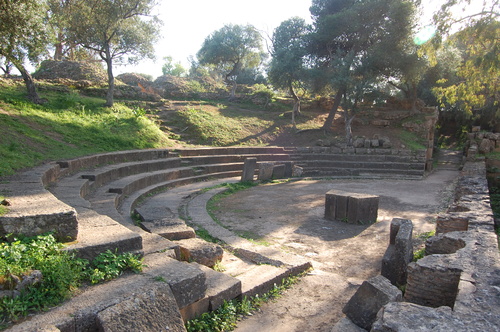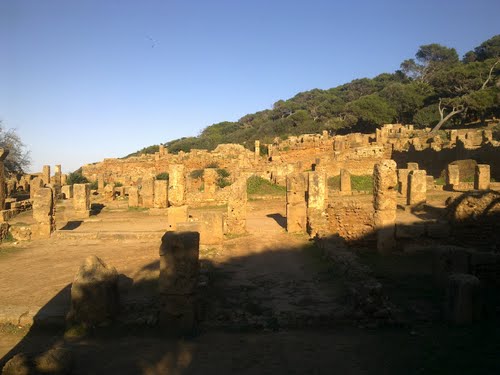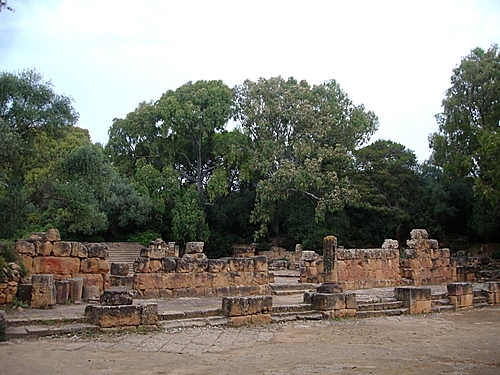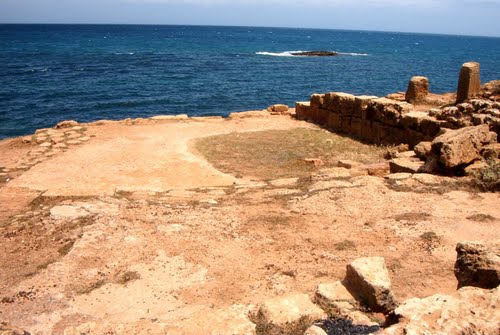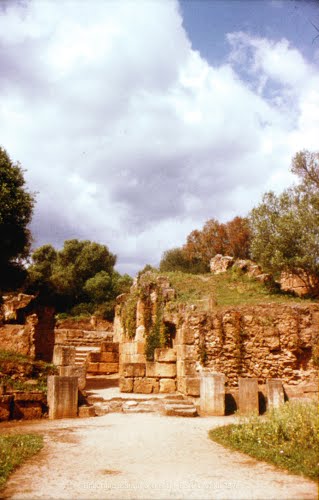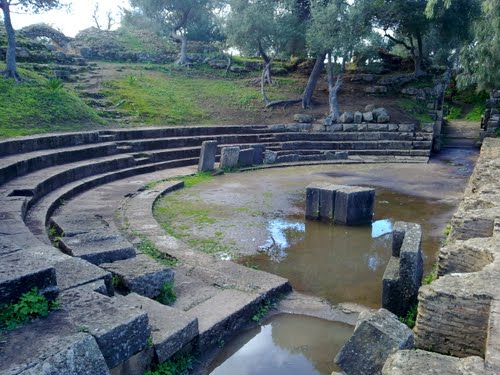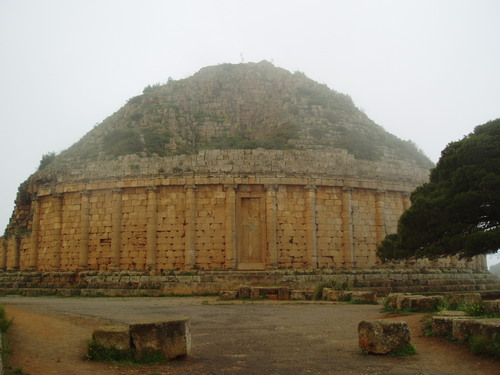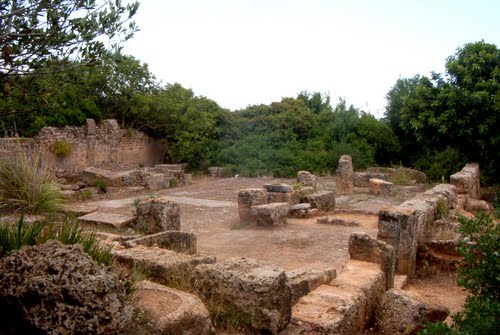Tipasa was a colonia in Roman province Mauretania Caesariensis, nowadays called Tipaza, and located in coastal central Algeria. Since 2002, it has been declared by UNESCO a "World Heritage Site".
History
Initially the city was a small ancient Punic trading-post conquered by Ancient Rome and turned into a military colony by the emperor Claudius for the conquest of the kingdoms of Mauretania. Afterwards it became a municipium called Colonia Aelia Augusta Tipasensium, that reached the population of 20,000 inhabitants in the fourth century according to historian Gsell.
The Roman city was built on three small hills which overlooked the sea, nearly 20 km. east from Caesarea. Of the houses, most of which stood on the central hill, no traces remain, but there are ruins of three churches — the Great Basilica and the Basilica Alexander on the western hill, and the Basilica of St Salsa on the eastern hill, two cemeteries, the baths, theatre, amphitheatre and nymphaeum. The line of the ramparts can be distinctly traced and at the foot of the eastern hill the remains of the ancient harbour.
The basilicas are surrounded by cemeteries, which are full of coffins, all of stone and covered with mosaics. The basilica of St. Salsa, which has been excavated by Stephane Gsell, consists of a nave and two aisles, and still contains a mosaic. The Great Basilica served for centuries as a quarry, but it is still possible to make out the plan of the building, which was divided into seven aisles. Under the foundations of the church are tombs hewn out of the solid rock. Of these one is circular, with a diameter of 18 m and space for 24 coffins.
Commercially Tipasa was of considerable importance, but it was not distinguished in art or learning. Christianity was early introduced, and in the third century Tipasa was an episcopal see, now inscribed in the Catholic Church's list of titular sees.
Most of the inhabitants continued non-Christian until, according to the legend, Salsa, a Christian maiden, threw the head of their serpent idol into the sea, whereupon the enraged populace stoned her to death. The body, miraculously recovered from the sea, was buried, on the hill above the harbour, in a small chapel which gave place subsequently to the stately basilica. Salsa's martyrdom took place in the 4th century. In 484 the Vandal king Huneric (477‑484) sent an Arian bishop to Tipaza, whereupon a large number of the inhabitants fled to Spain, while many of the remainder were cruelly persecuted.
Tipasa revived for a brief time during the Byzantine occupation in the 6th century but was given the Arabic language name, Tefassed, when Arabs arrived there. The term translated means badly damaged.
In the third century Christianity was worshipped by all the Romanised Berbers and Roman colonists of Tipasa. From this period comes the oldest Christian epitaph in Roman Africa dated October 17, 237 AD. In Tipasa were built the biggest basilicas of actual Algeria: the Alexander basilica and the basilica of Saint Salsa.
Tipasa was partially destroyed by the Vandals in 430 AD, but was rebuilt by the Byzantines one century later. At the end of the seventh century the city was destroyed by the Arabs and reduced to ruins.

